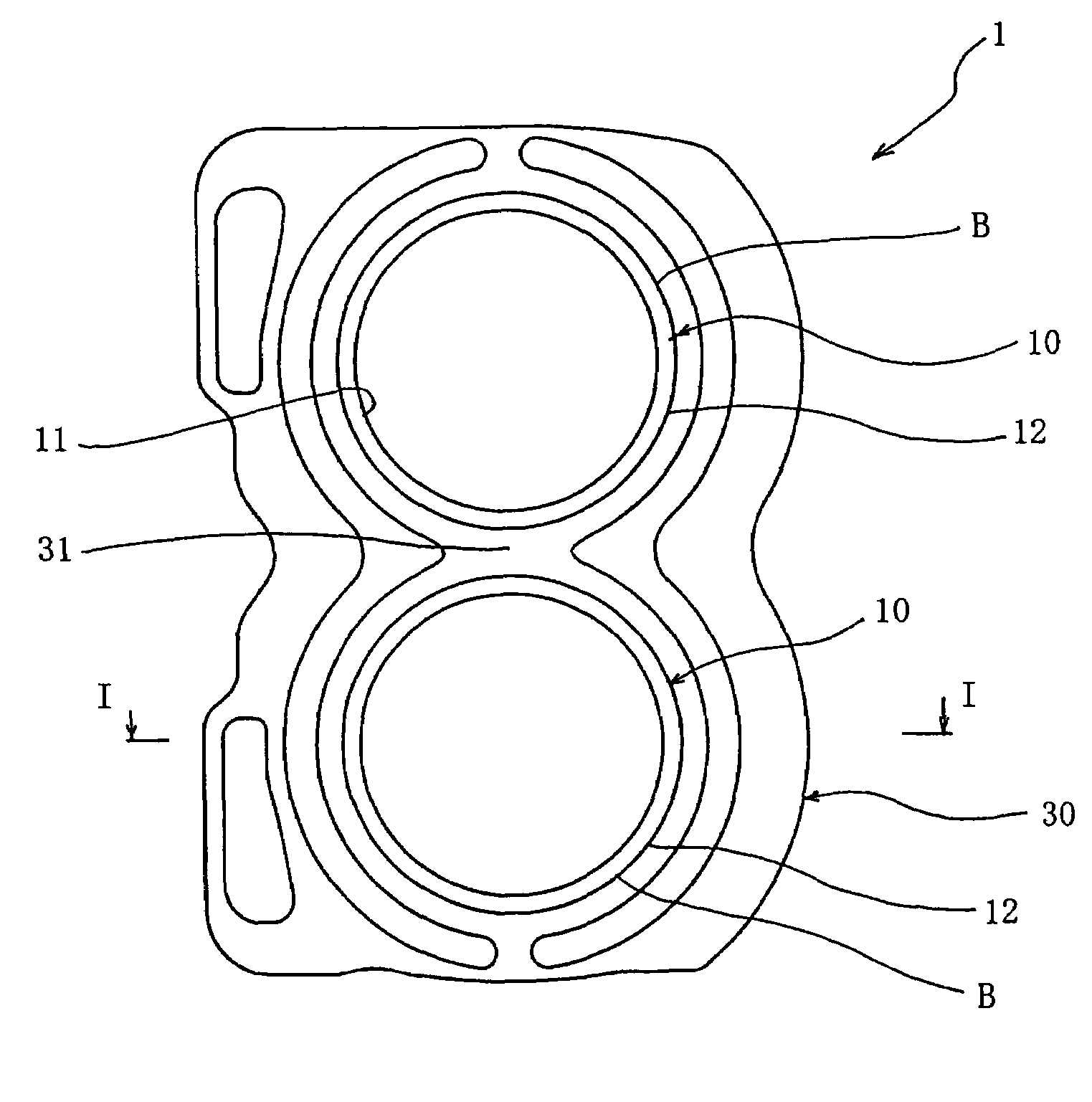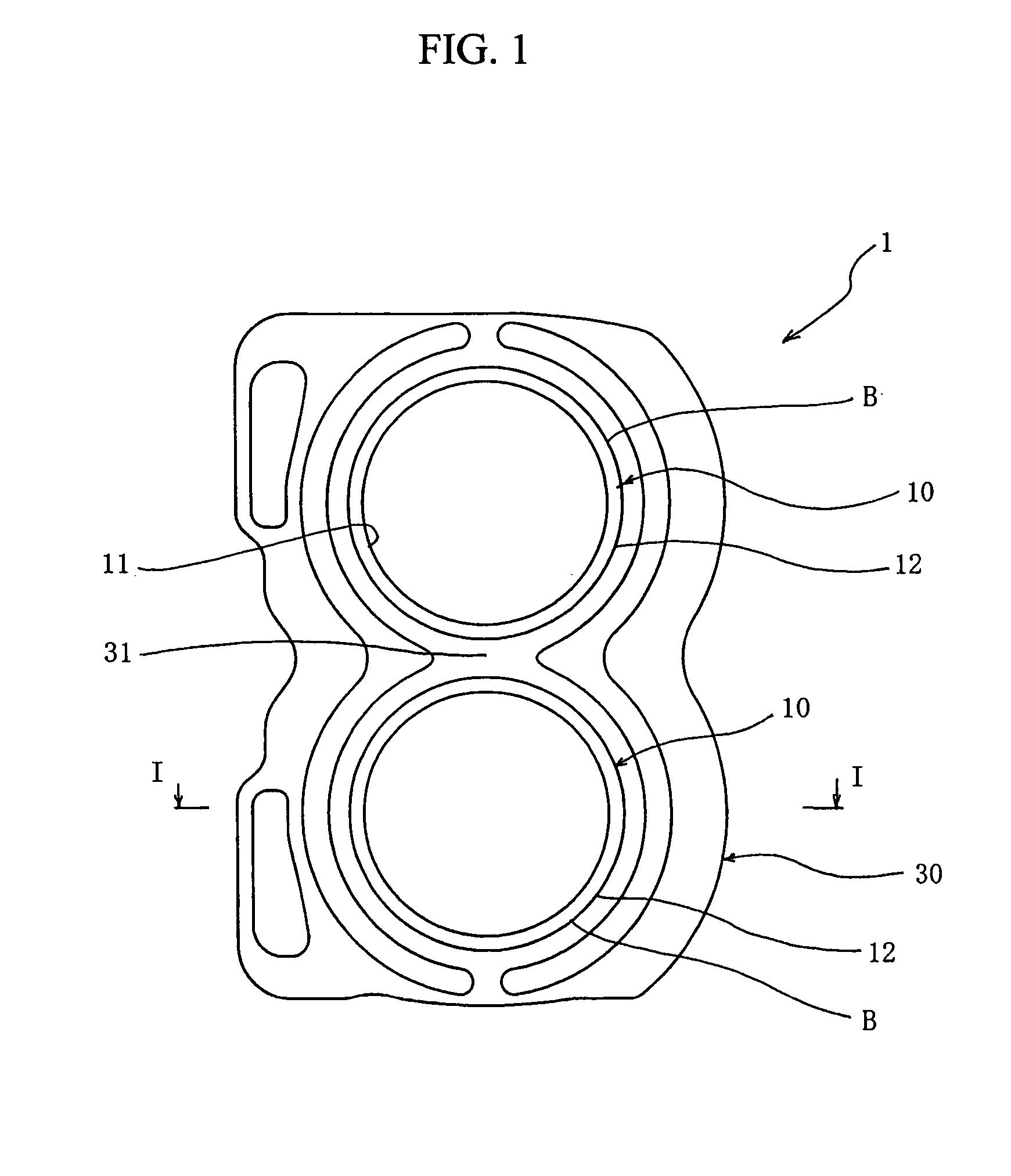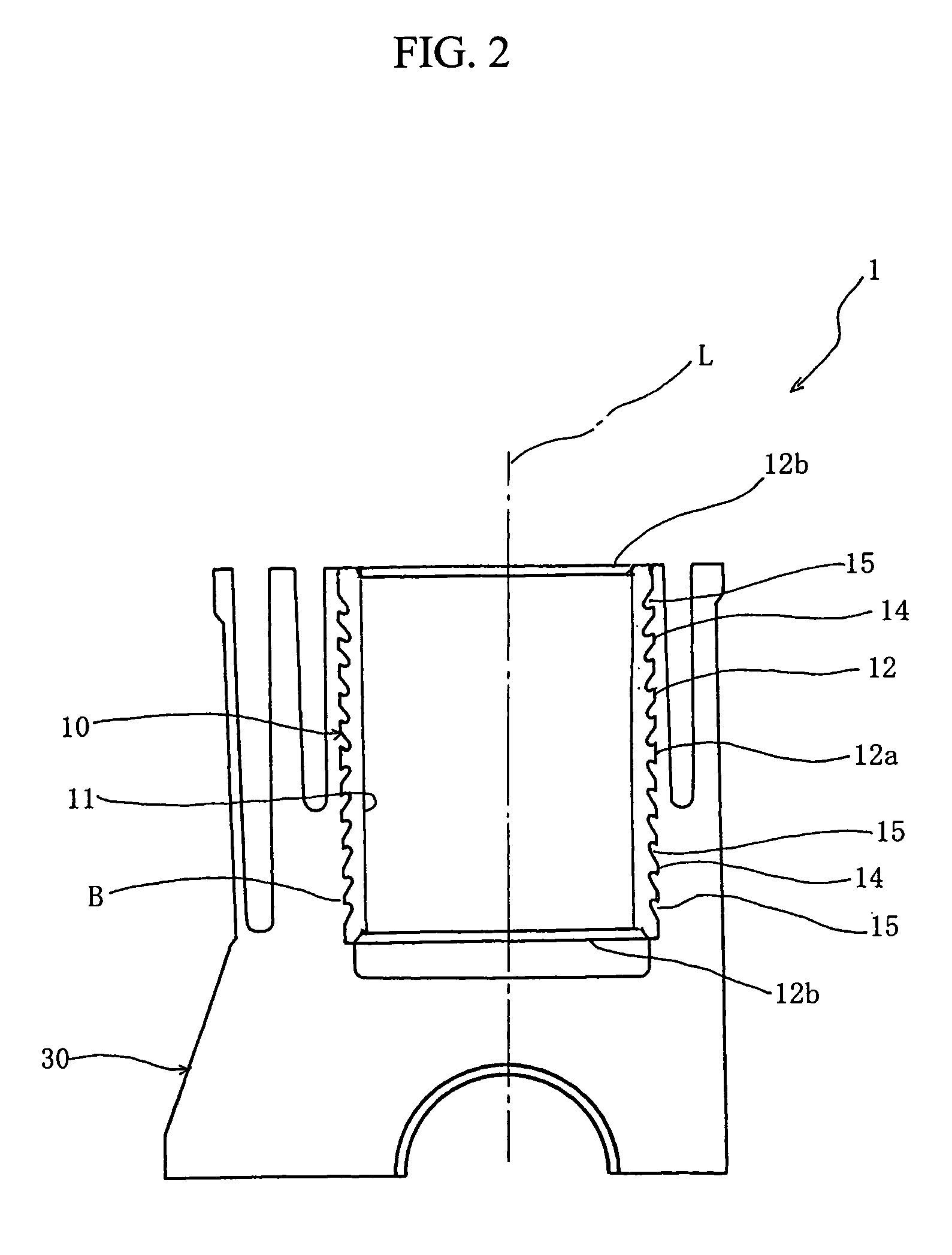Cylinder liner and cylinder block
a technology of cylinder block and liner, which is applied in the direction of cylinders, reciprocating piston engines, positive displacement engines, etc., can solve the problems of increased fuel consumption, reduced performance, gap or void formation at the interface between the cylinder block main body, etc., and achieves easy measurement or judgment, easy deburring, and further improvement of the bonding strength between the two.
- Summary
- Abstract
- Description
- Claims
- Application Information
AI Technical Summary
Benefits of technology
Problems solved by technology
Method used
Image
Examples
first embodiment
[0055]FIGS. 1 to 10 describe a first embodiment of a cylinder liner and a cylinder block according to the present invention.
[0056]FIG. 1 is a plane view of a cylinder block 1 including a cast iron cylinder liner 10 provided in an aluminum alloy cylinder block main body 30 by casing the aluminum alloy. FIG. 2 is a cross-section of the cylinder block 1 shown in FIG. 1 obtained by cutting along a line I-I therein. FIG. 3 is a perspective view of the cylinder liner 10, FIG. 4 is a side view of the cylinder liner 10, and FIG. 5 is an expanded cross-sectional view of the cylinder liner 10 shown in FIG. 3 which is obtained by cutting along a line II-II in FIG. 3.
[0057]As shown in FIGS. 3 to 5, the cylinder liner 10 has a cylindrical shape, extending in a direction of a central axis L. The cylinder liner 10 has a cross-section in the form of a circle drawn around the central axis L. The cylinder liner 10 has an inner surface 11 and an outer surface 12.
[0058]A plurality of grooves 15 are for...
second embodiment
[0074]FIGS. 11 to 23 describe a second embodiment of a cylinder liner 20 and a cylinder block 1 according to the present invention.
[0075]FIG. 11 is a perspective view of a cast iron cylinder liner 20 according to the present invention. FIG. 12 is an expanded cross-sectional view of the cylinder liner 20 shown in FIG. 11 which is obtained by cutting along a line III-III therein.
[0076]As shown in FIGS. 11 and 12, the cylinder liner 20 has a cylindrical shape, extending in a direction of a central axis L. The cylinder liner 20 has a cross-section in the form of a circle drawn around the central axis L. The cylinder liner 20 has an inner surface 21 and an outer surface 22.
[0077]Grooves 25 are formed on the outer surface 22 of the cylinder liner 20. The grooves 25 extend in the form of a spiral having a plurality of turns in a circumferential direction R of the cylinder liner 20. By the provision of the grooves 25 with a spiral shape, the outer surface 22 of the cylinder liner 20 is divi...
example 1
[0099]Cast iron cylinders with inner diameter of 100 mm, outer diameter of 106 mm, and length in the axial direction of 120 mm were used as workpieces. The outer surfaces of the workpieces were carved by a carving tool having a nose angle of 35° and a corner radius of 0.4 mm, so that cylinder liners 20 having spiral grooves 25 having a depth of 0.7 mm were prepared. For comparison, cylinder liners 20 were formed with different cutting edge angles and different pitch sizes. Each of the cylinder liners 20 was used for a die-cast aluminum alloy cylinder block main body 30, so that a cylinder block 1 was formed. The contacting state at the interface between the cylinder liner 20 and the cylinder block main body 30, and the productivity of the cylinder block 1 were evaluated.
[0100]FIG. 21 and FIG. 22 show the test result. More precisely, FIG. 21 is a table for showing the relationship among the cutting edge angle, pitch of the spiral section, productivity of the cylinder liner 20, and th...
PUM
 Login to View More
Login to View More Abstract
Description
Claims
Application Information
 Login to View More
Login to View More - R&D
- Intellectual Property
- Life Sciences
- Materials
- Tech Scout
- Unparalleled Data Quality
- Higher Quality Content
- 60% Fewer Hallucinations
Browse by: Latest US Patents, China's latest patents, Technical Efficacy Thesaurus, Application Domain, Technology Topic, Popular Technical Reports.
© 2025 PatSnap. All rights reserved.Legal|Privacy policy|Modern Slavery Act Transparency Statement|Sitemap|About US| Contact US: help@patsnap.com



